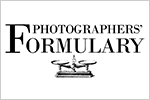Product Description
-
EXACTOL LUX is a unique developer of special interest to artists and photographers wishing to produce monochrome fine prints, is from the same stable as DiXactol Ultra, and has the same distinguishing characteristics. Clean working: it produces the fullest palette of richly graduated tones, especially in the holding of translucent and delicately drawn highlights particularly resistant to blocking up at high exposure levels. At the same time, shadow detail and separation are nursed up to unusual levels. Printing is likely to need significantly less burning in, in landscape skies, for instance, and graduation is likely to be markedly superior in these burned-in areas. Discriminating workers appreciating the fine separation of tones should find this a fulfilling developer.
Exactol Lux is balanced to give more subtle grain than DiXactol, especially on smaller film formats.Additionally, almost all films (with the exception of adapted document copying films) can be developed together, regardless of film speed or make, for about the same time to produce exceptionally easily printable negatives. It makes the simultaneous processing of roll films containing many different pictures with greatly varying subject brightness ranges perfectly practical. Photographers using zone system exposure control on roll film should find it possible to give a single processing time that allows higher quality printing on a narrower spread of paper contrast grades. N+ or N- development times are still possible for those zone workers wishing to exercise tight control of tonal contrast, but the need for this is reduced.
During development, the tanning of the Gelatine containing the film emulsion occurs in direct proportion to the varying exposure received by differing areas of the negative - the more the exposure, the more the tanning. This tanning reduces the absorption of developer by the emulsion, and so heavily exposed highlight regions of the negative are automatically restrained in development because fresh developer cannot reach them, whilst development continues in the lesser-exposed shadow areas and with proportionate action across the mid-tones. Halation around heavily exposed areas of images (such as windows in an architectural interior or lights in a nigh-time picture) is especially well controlled.
One 100ml pack is sufficient to process a minimum of 33 rolls of 35mm film, or 40 rolls of 120 films if they are loaded two to a spiral. One liter of working solution will process 160 square inches of film.
Where to Buy
Info & Data
-
Manufacturer: Photographers' Formulary
Catalog Number(s): 01-5005


